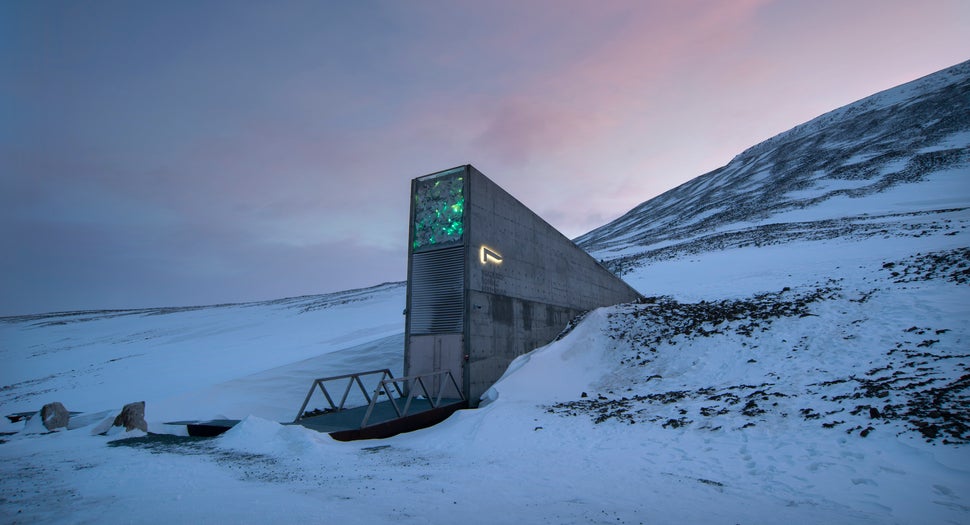by LAURA PADDISON

The Svalbard Global Seed Vault is welcoming new seeds from around the world, including the Cherokee Nation.
The “Doomsday Vault” lies within the Arctic Circle on the island of Spitsbergen, about halfway between mainland Norway and the North Pole. All that can be seen from outside the vault is the entrance ? a futuristic jut of concrete, illuminated with blue-green fiber optic lights. The rest of the building stretches into the mountainside, sunk deep into the rock and permafrost to keep temperatures low. It is designed to remain at -0.4 degrees Fahrenheit (-18 degrees Celsius), even without power. It’s supposed to outlast humanity.
The vault was built to conserve something invaluable: seeds. Officially known as the Svalbard Global Seed Vault, this is a backup facility for the 1,700 seed banks around the world. It’s a library of diversity and a time capsule of agricultural history, designed to safeguard the world’s most important crops from catastrophe ? including war, disease and, increasingly, the impact of climate change.
“Just like you have your computer and you want to back up your hard drive and make sure that your data is at another location ? that’s the purpose of the seed vault at Svalbard,” said Hannes Dempewolf, senior scientist at the Crop Trust, the international nonprofit that manages the seed vault together with the Norwegian Ministry of Agriculture and Food and the Nordic Genetic Resource Centre (NordGen).
The vault now holds seeds representing more than 5,000 species, provided by local seed banks from nearly every country in the world. The aim is to store a copy of every unique seed that currently exists in the global network of seed banks.
Huffington Post for more
